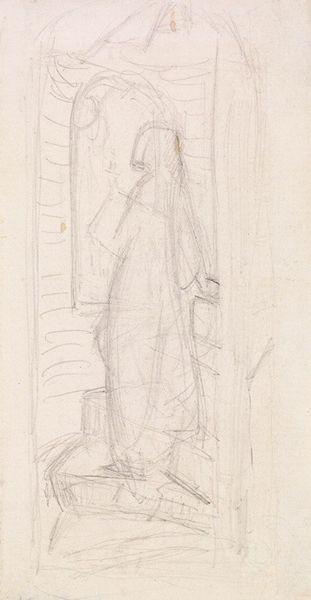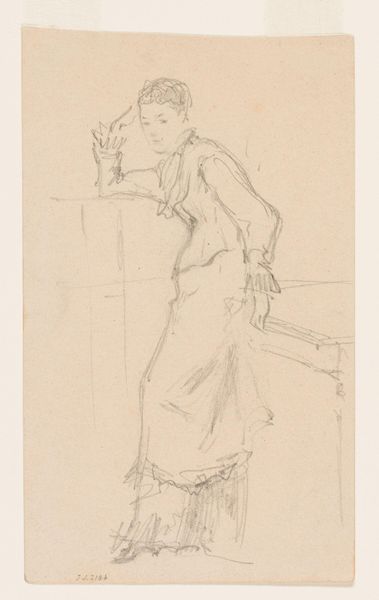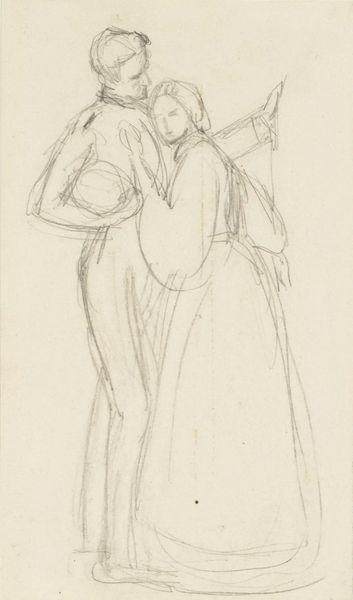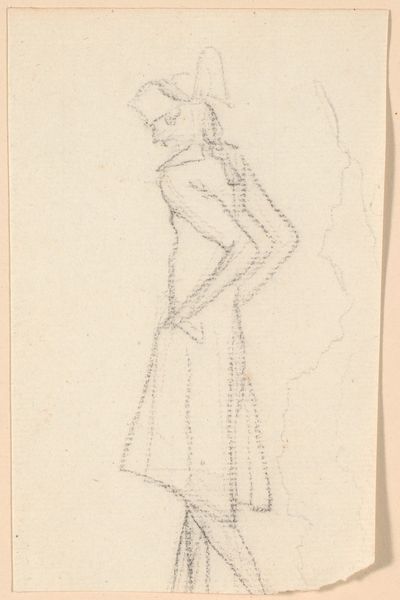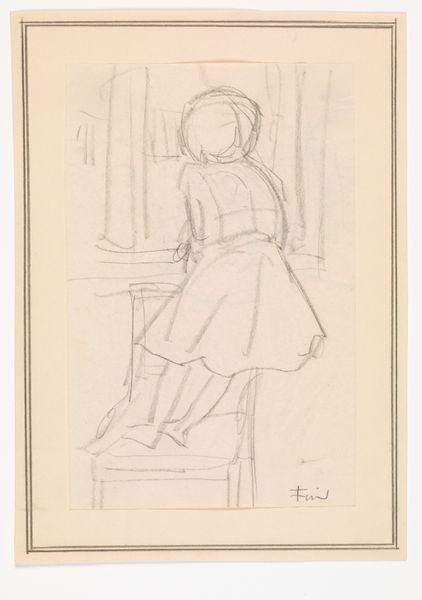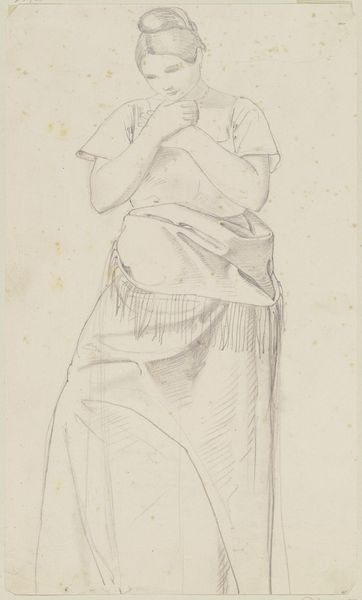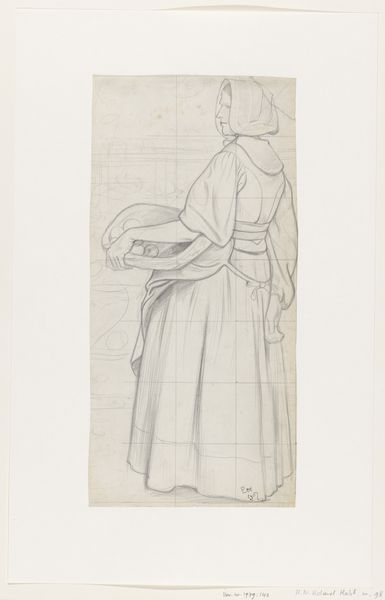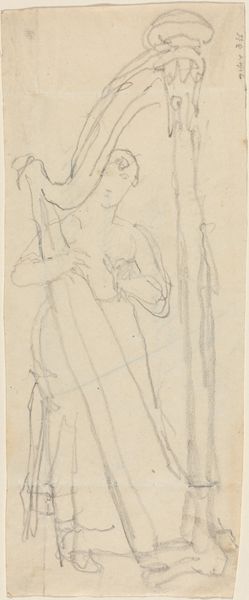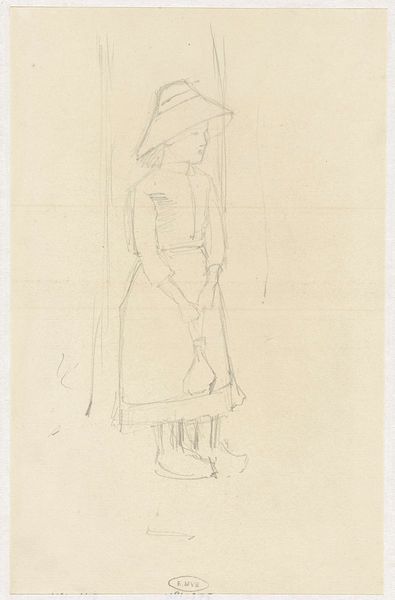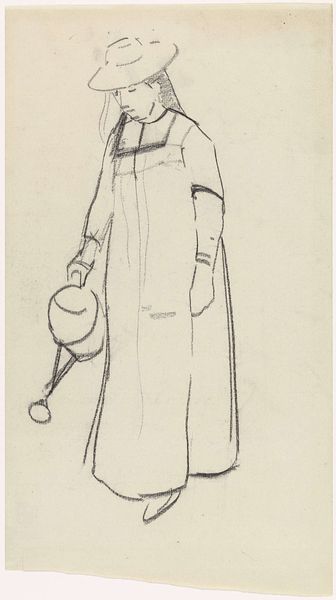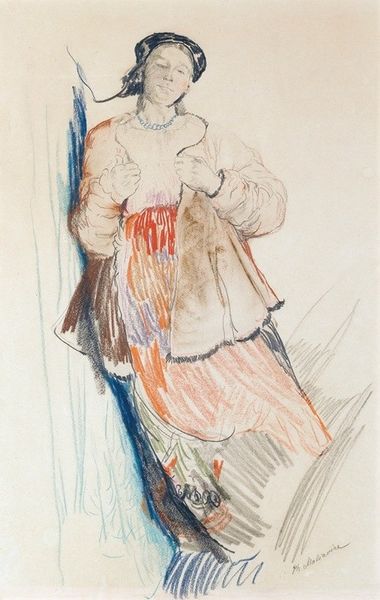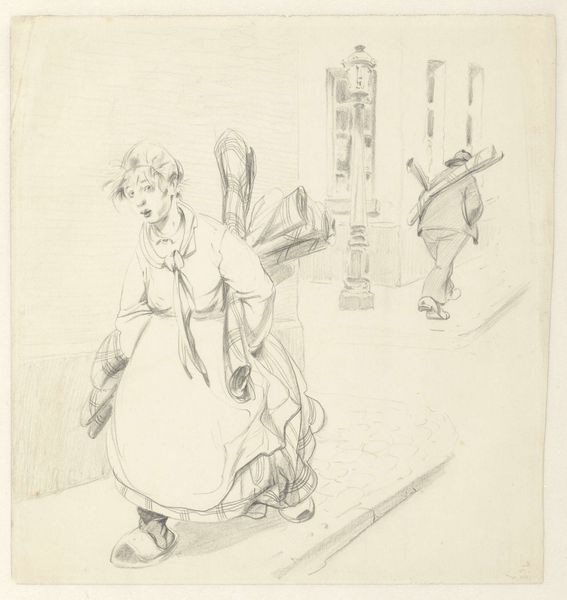
drawing, pencil
#
portrait
#
drawing
#
pencil sketch
#
figuration
#
pencil
#
ashcan-school
Copyright: Public Domain: Artvee
Editor: Here we have George Bellows' pencil drawing, "Lady Jean, study for Bellows’ Lady Jean." It’s quite a spare image with its gridlines and understated presence. How do you interpret this work, given its incomplete nature? Curator: Well, considering Bellows’ association with the Ashcan School, it's tempting to read this drawing against the grain of idealized portraiture. Despite being a study, the visible grid reveals a deliberate process. How does this preparatory structure speak to his intention of portraying Lady Jean beyond a simple likeness? Perhaps situating her within a framework, literally, allows us to examine the social constructs that shaped her identity. Editor: That's interesting. It’s like he’s mapping out the societal expectations placed upon her. Do you see any feminist readings of this work? Curator: Absolutely. Looking at the details, one might interpret Lady Jean's posture as slightly withdrawn, questioning the roles she's expected to inhabit. What do you make of her averted gaze in the larger context of female representation at the time? How does the incompleteness of the study relate to the ongoing project of defining womanhood itself? It is very suggestive. Editor: It’s almost like the incompleteness emphasizes that her identity is still being defined, both by herself and society. Curator: Precisely. This pushes us to consider the artwork not merely as a portrait, but as an intersectional dialogue about identity, gender, and the social landscape. Even a preliminary sketch such as this one invites powerful contemporary considerations. Editor: Thank you. I had not considered the gender implications until you reframed it within its historical context. Curator: It is the act of looking and questioning, a skill applicable to any artwork and beyond.
Comments
No comments
Be the first to comment and join the conversation on the ultimate creative platform.
